A few months ago we had our west coast brother from another mother Travis Barnes at Snail Performance dyno test AEM’s 2015 Subaru WRX STI intake system. The results were seriously impressive, with max gains of 30-hp at the wheels at around 5,800 RPM, along with lower intake air temps and less airflow restriction. So when AEM told us they now have a cold air intake available for the 2015 Subaru WRX, we knew it was time to put Travis’ testing skills to work again.
Having baseline dyno tested this bone-stock 2015 WRX on the AWD Mustang dyno he shares with FW Motorsports, FW tech Brandon then attacked the install while FW owner Paul did some DryFlow filter modelling for us. As Paul is pointing out on the box, AEM’s DryFlow filter captures 99% of harmful contaminants with an oil-free filtration material that’s both cleanable and guaranteed for the life of the car, so you know it’s durable.
As Brandon told us, the install was a straightforward job and the instructions were detailed, so he didn’t run into any problems at all. He was impressed that AEM includes a MAF extension wire with this kit, since the MAF is relocated closer to the fender on the AEM mandrel-bent aluminum intake tube (which has a nice, durable gunmetal grey finish on it). So no cutting or splicing of wires involved, making for a clean and simple installation.
As you can see, the AEM intake includes a heat shield that separates the filter from the hot engine bay, forcing the intake to breath in only the cooler, denser air from the low pressure zone between the fender and wheel well liner. And as you know, a cooler, denser air charge means more jam! What we don’t have is a picture with the OEM air duct installed, which fits into the notch at the front of the heat shield so that the filter is also able to draw fresh air in from the top of the front grille.
With the installation complete, Travis strapped the ’15 WRX to the AWD Mustang dyno and let her rip all the way to its 6,700 RPM redline. No tuning of the ECU on this test, just a straight bolt-on and go.
As you can see, there are solid gains in horsepower and torque across the entire powerband, with the biggest torque gains around 3,500 to 4,000 RPM, right in the heart of the mid-range where you want it. Then when horsepower takes over at higher RPM, you again see the biggest gains from about 5,400 RPM right to the 6,700 RPM fuel cutoff. Peak vs peak torque gains add up to 6-wtq (249 vs 243), but the area-under-the-curve gains are what really impressed us, with maximum torque gains of about 15-wtq at around the 3,700 RPM mark. Peak horsepower rose to 221-whp compared to the stock peak value of 218-whp, but again that doesn’t tell the whole story, with the gap widening to 10 to 15-whp across the last 1,000 RPM or so, really helping to liven up the top end.
Travis also logged Intake Air Temperature, with the factory IATs in red and the AEM IATs in blue. As you can see, the heat shield and filter location used by AEM is working very well to reduce IAT, so part of the power gains seen would have been the result of these lower temperatures.
As this log of intake vacuum shows, the AEM intake is also less restrictive than the stock intake system, since it’s creating less vacuum or negative boost pressure. Interestingly, and unlike the 2015 STI where we saw slightly higher boost levels across the top of the powerband, the 2015 WRX was holding boost pressure to the same as OE even after the AEM system was installed. This suggests that perhaps the WRX’s FA20DIT computer is reacting differently to the reduction in vacuum than the STI’s EJ257 computer did, but with average vacuum being less than half that of the OEM intake, there’s no question the AEM WRX air intake is a freer-flowing setup and should therefore deliver some bigger gains with a custom ECU tune.
In the end, we didn’t see the same huge power gains as we did with the STI intake system, but we’re still impressed by the overall gains in area-under-the-curve on this 2015 WRX, especially considering the system costs less than $300 on AEM’s website. We think that’s great bang for the buck, and with a custom tune it’s only going to get better.
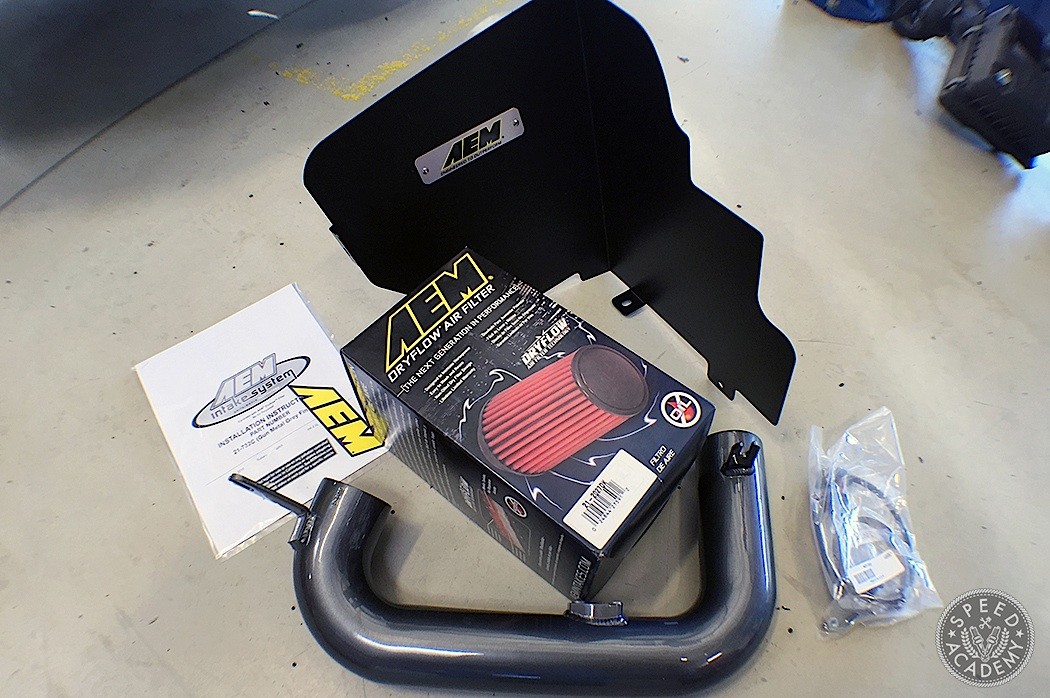
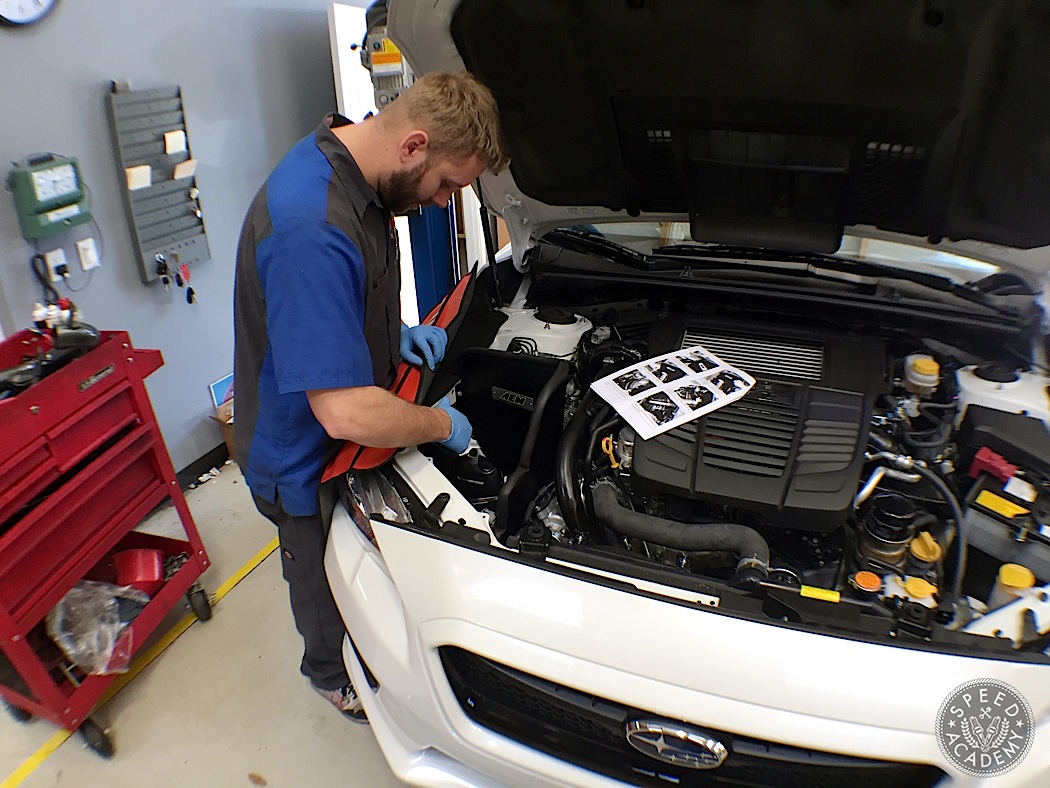
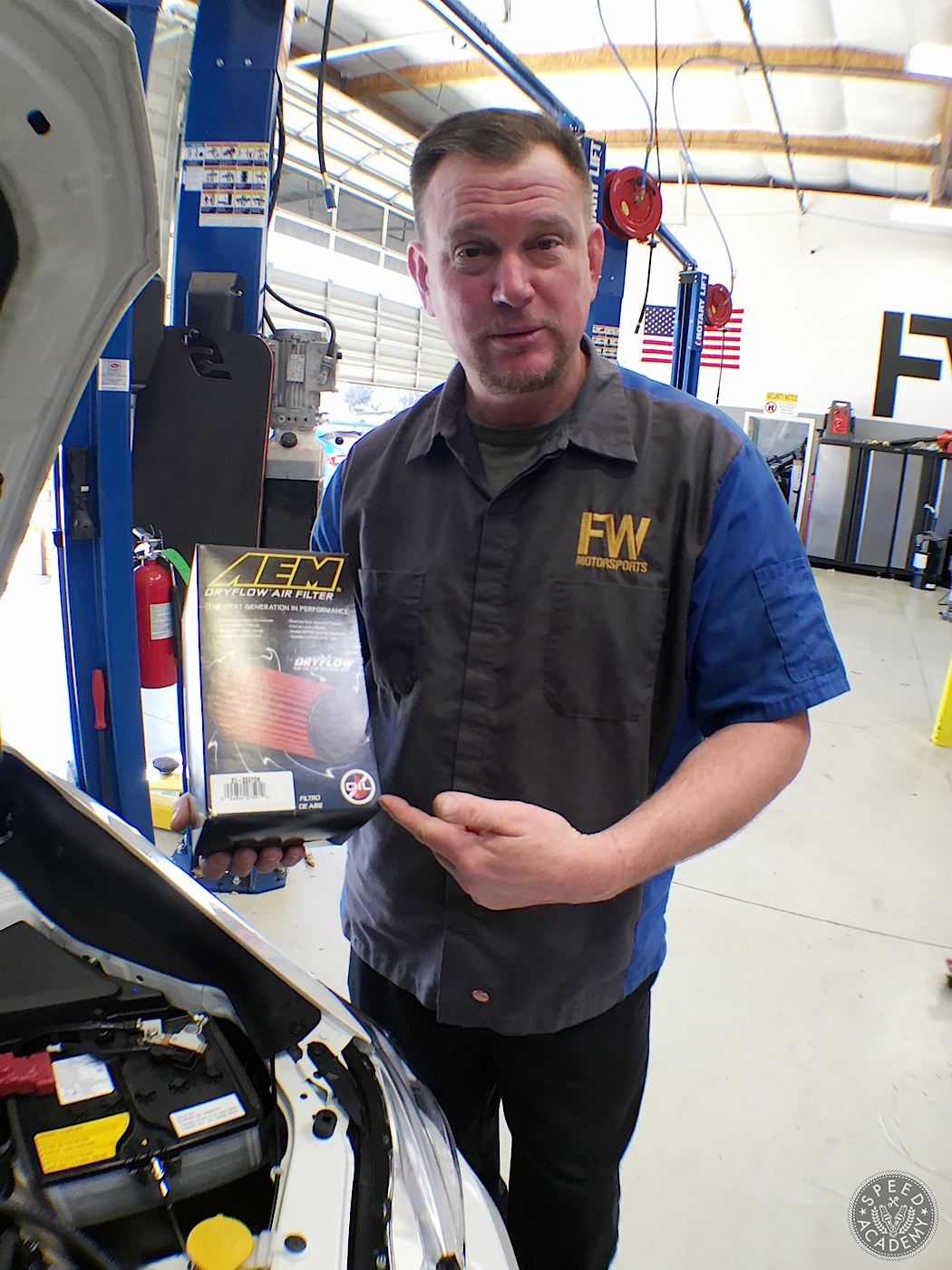
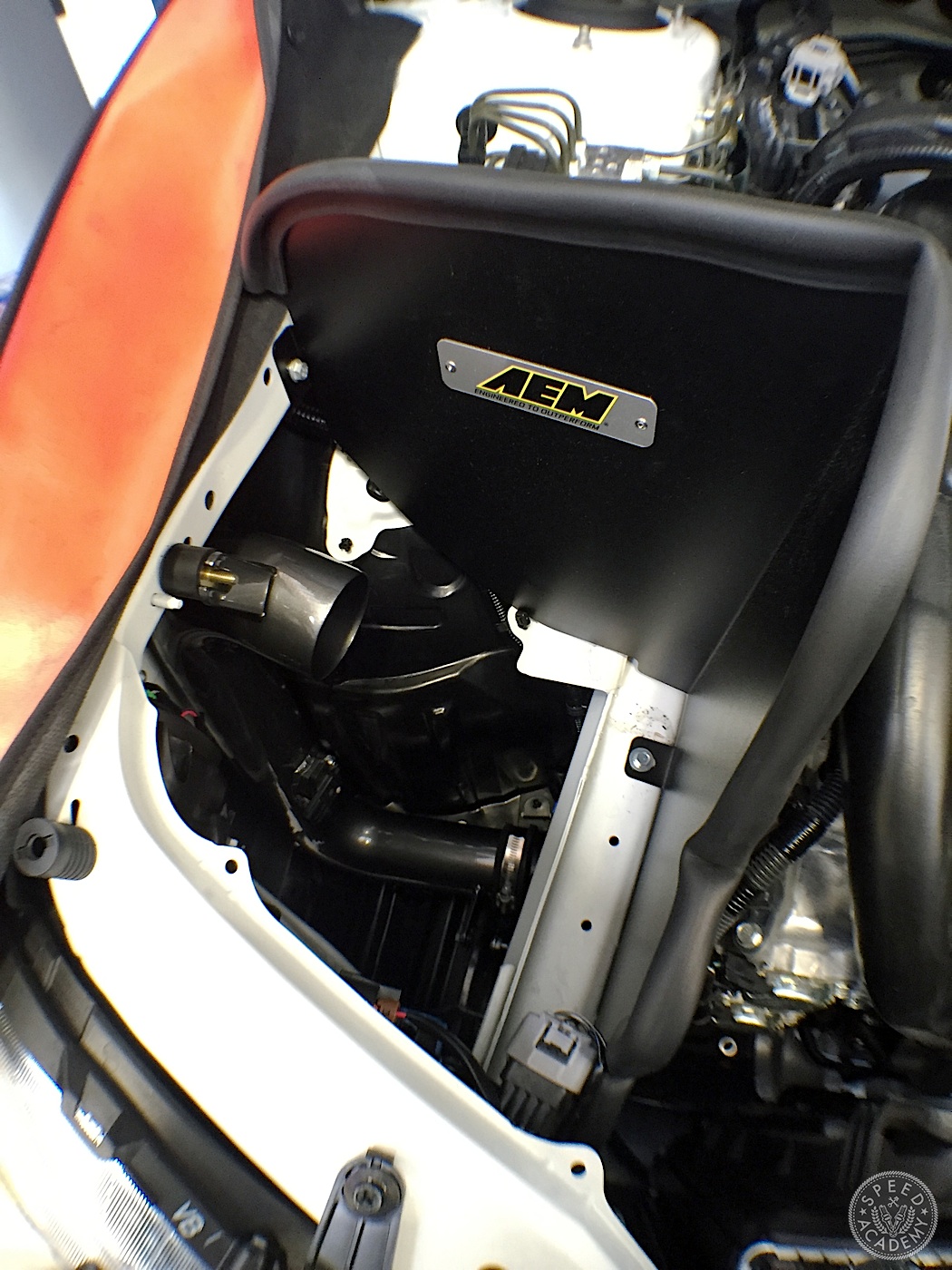
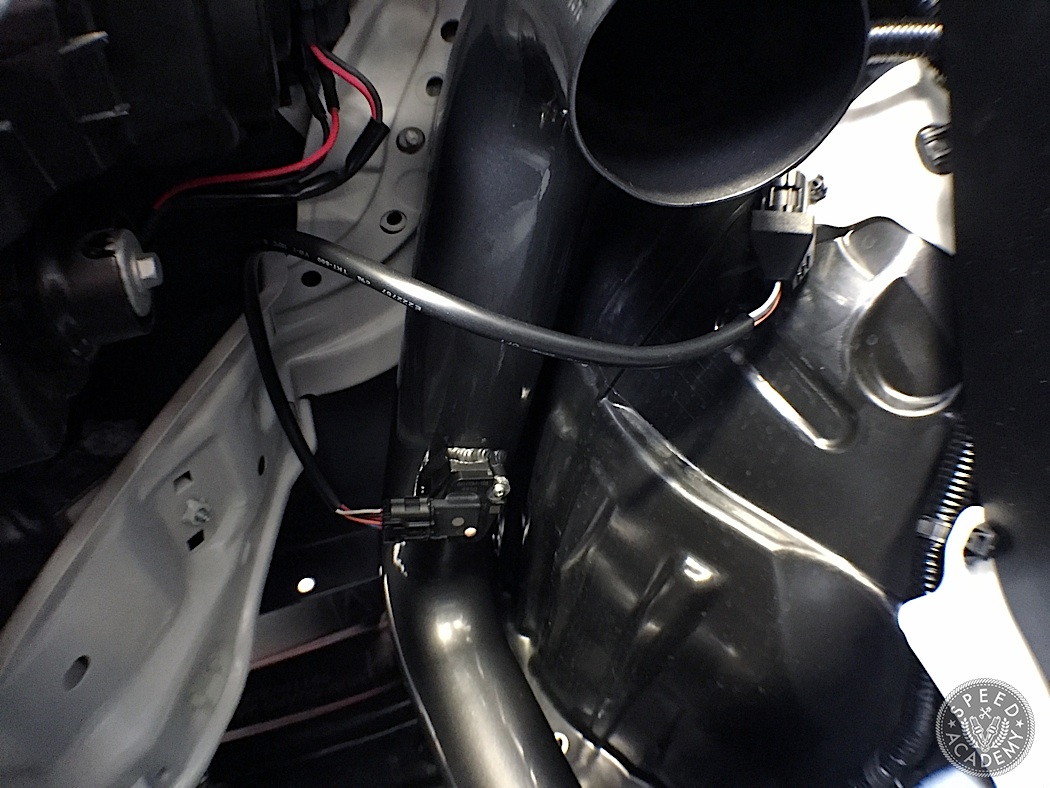
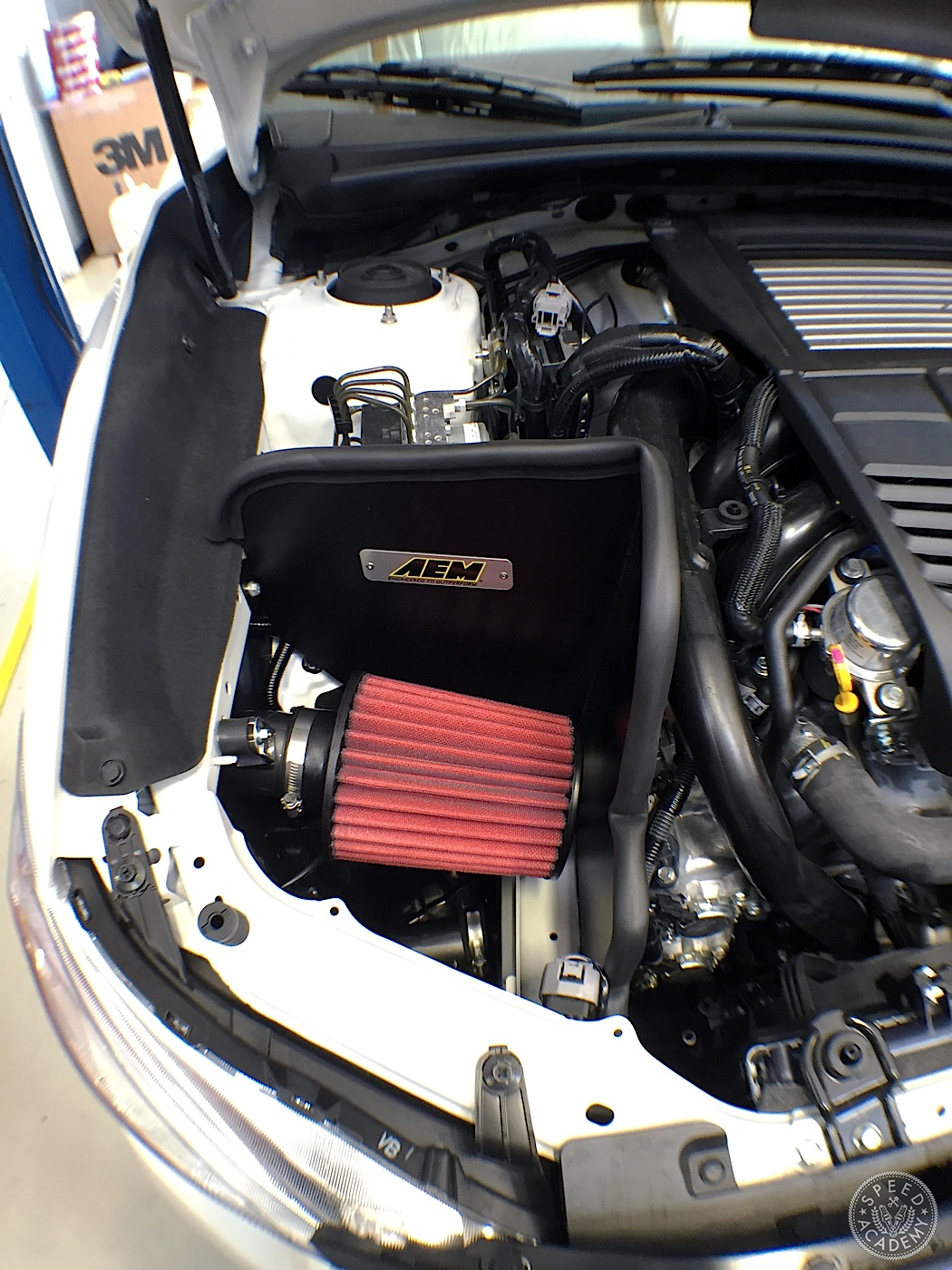
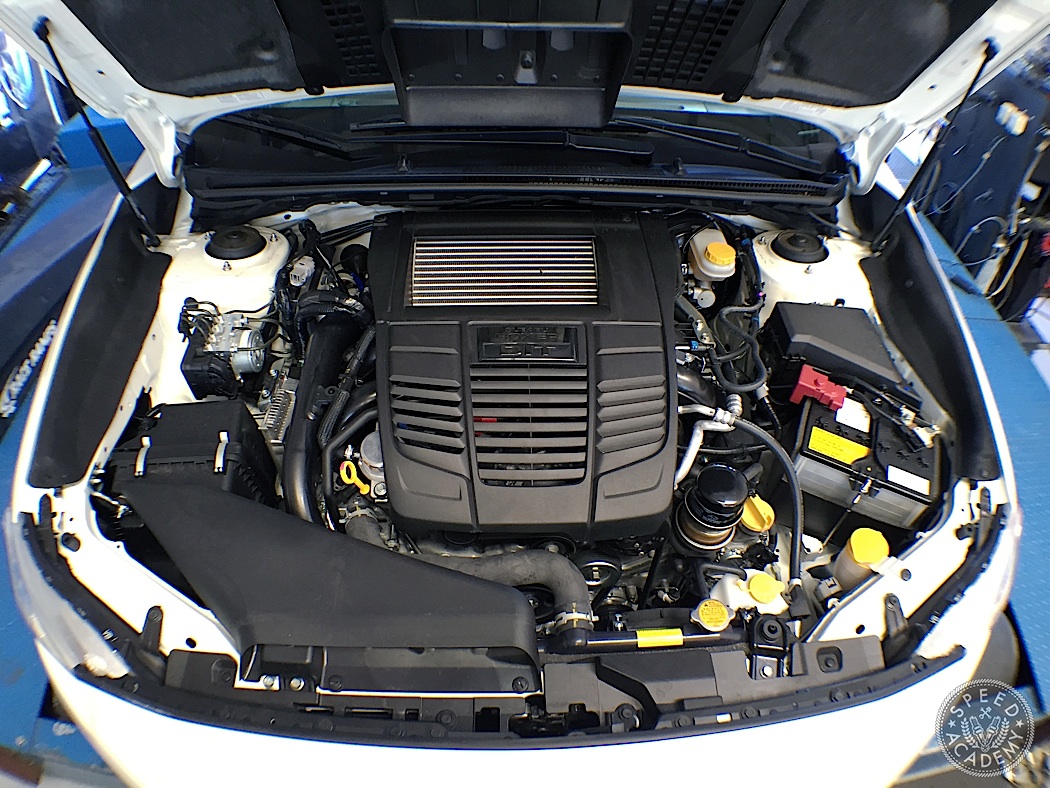
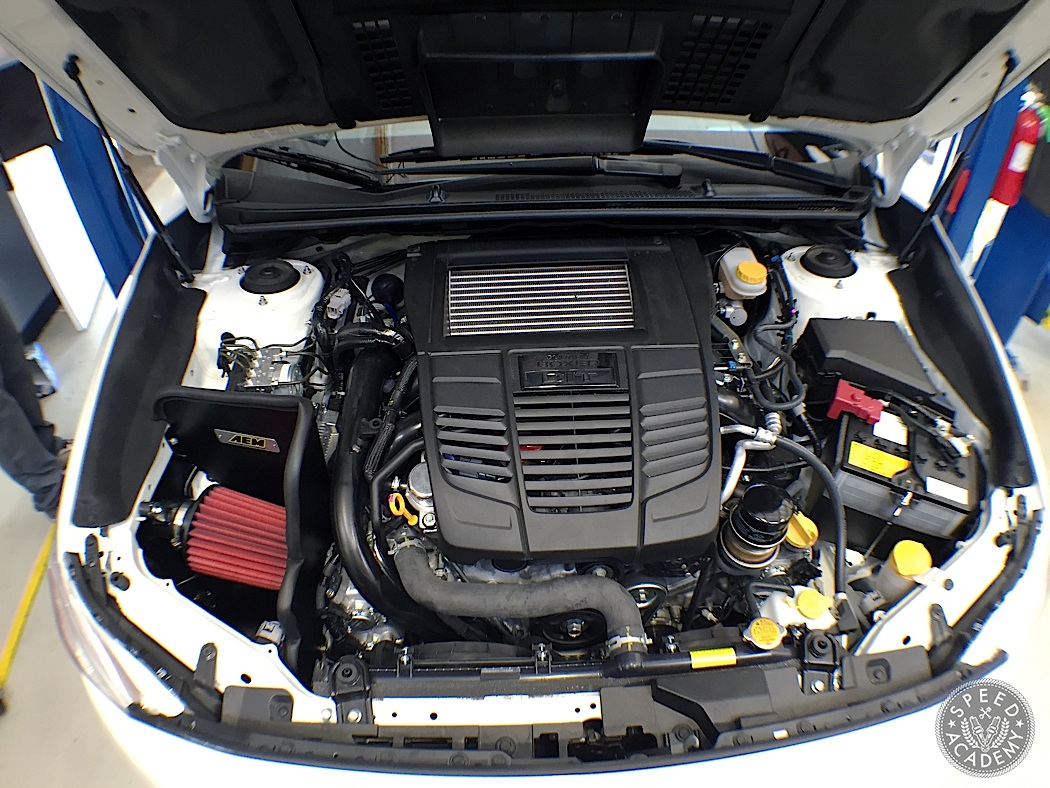
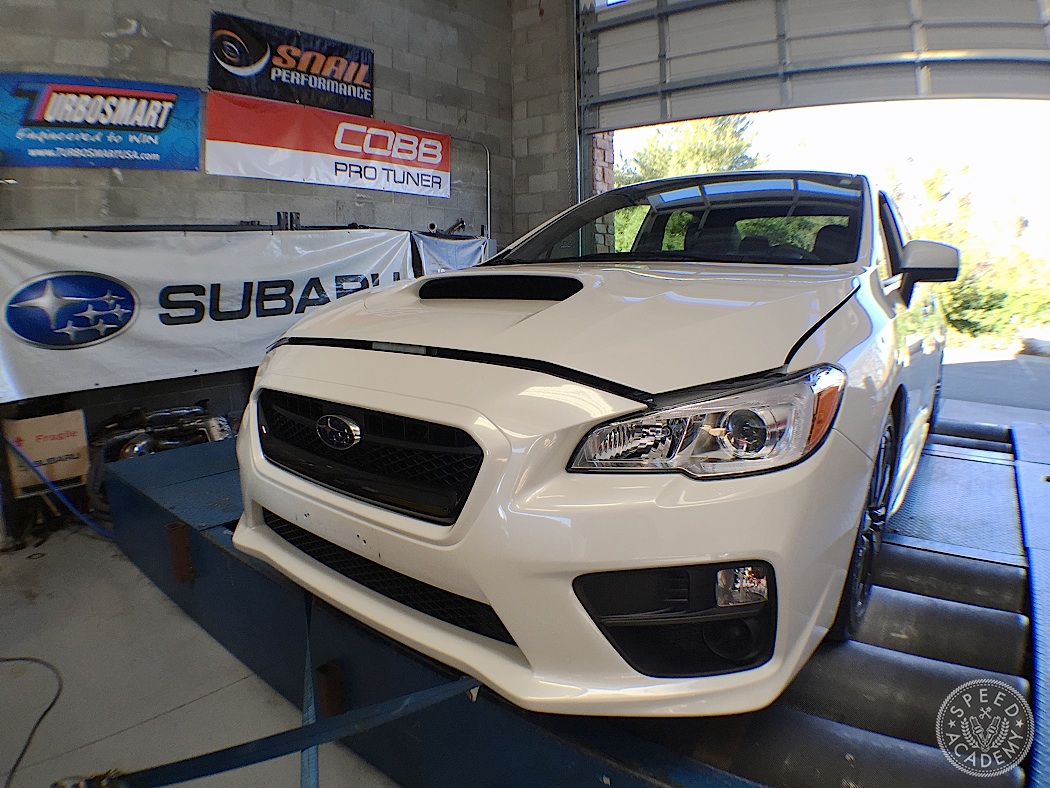
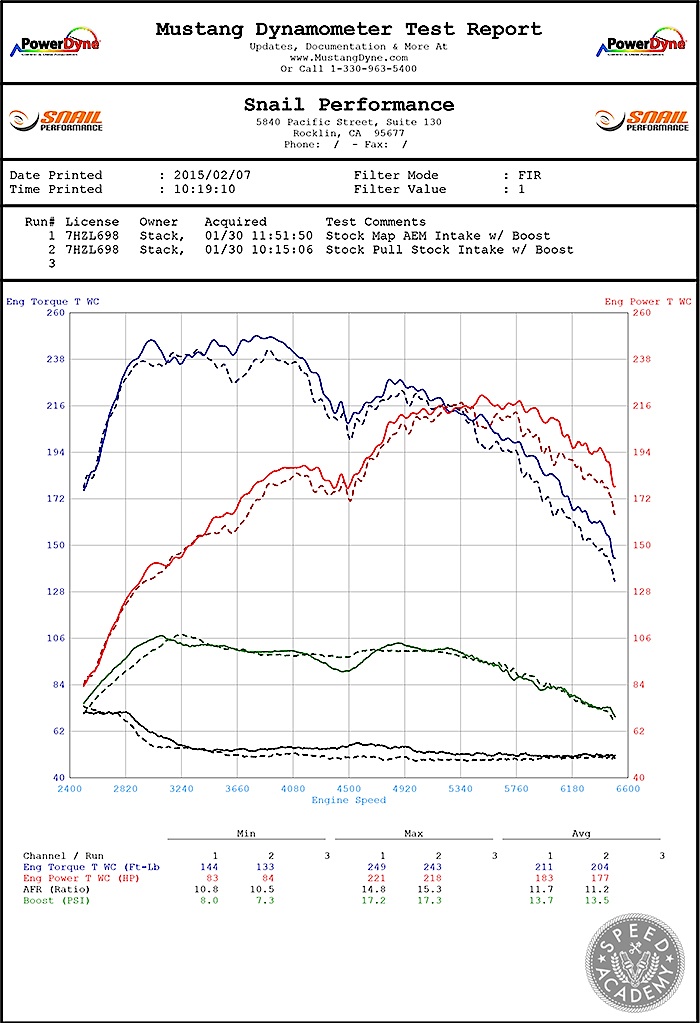
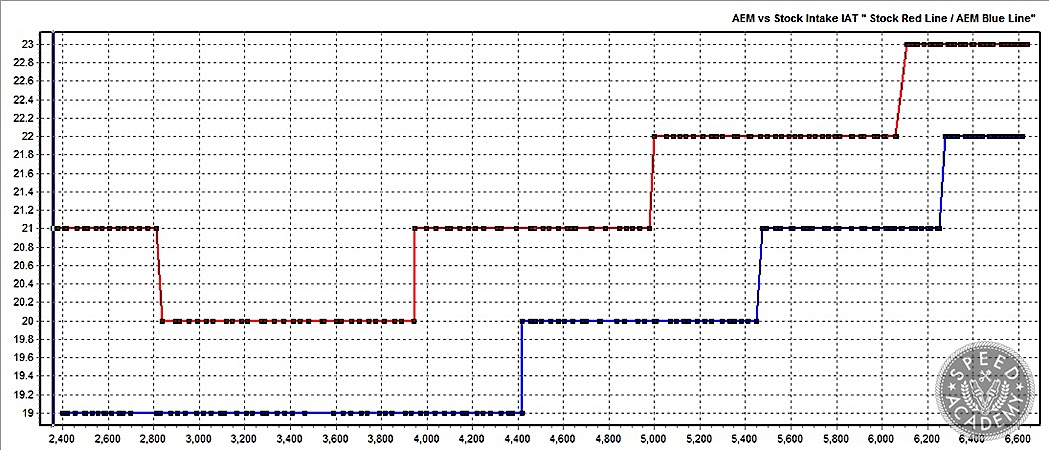
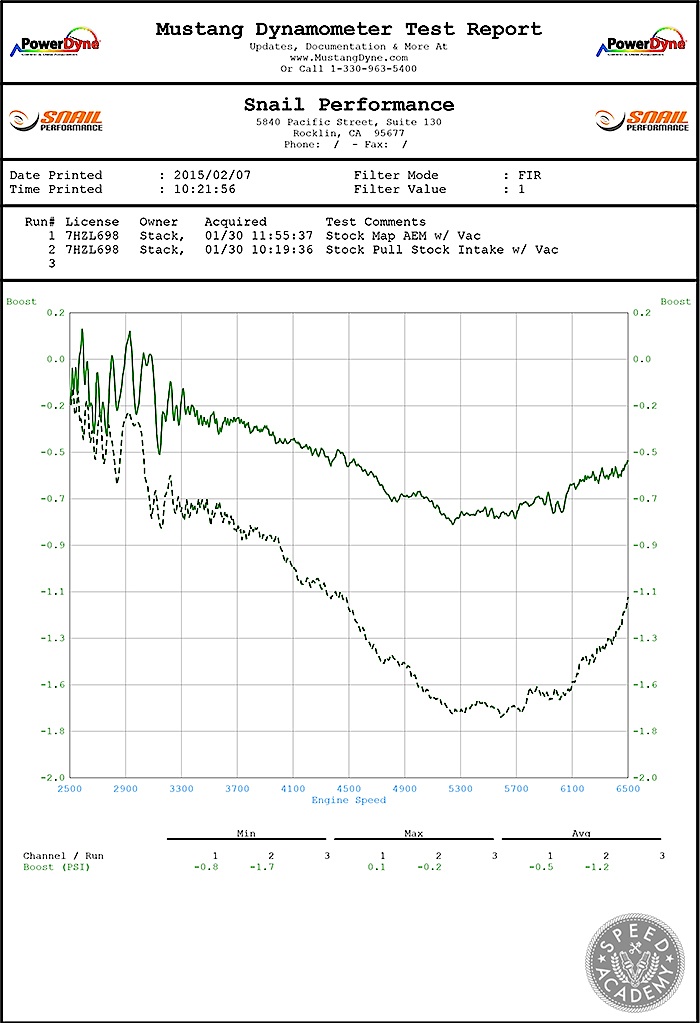
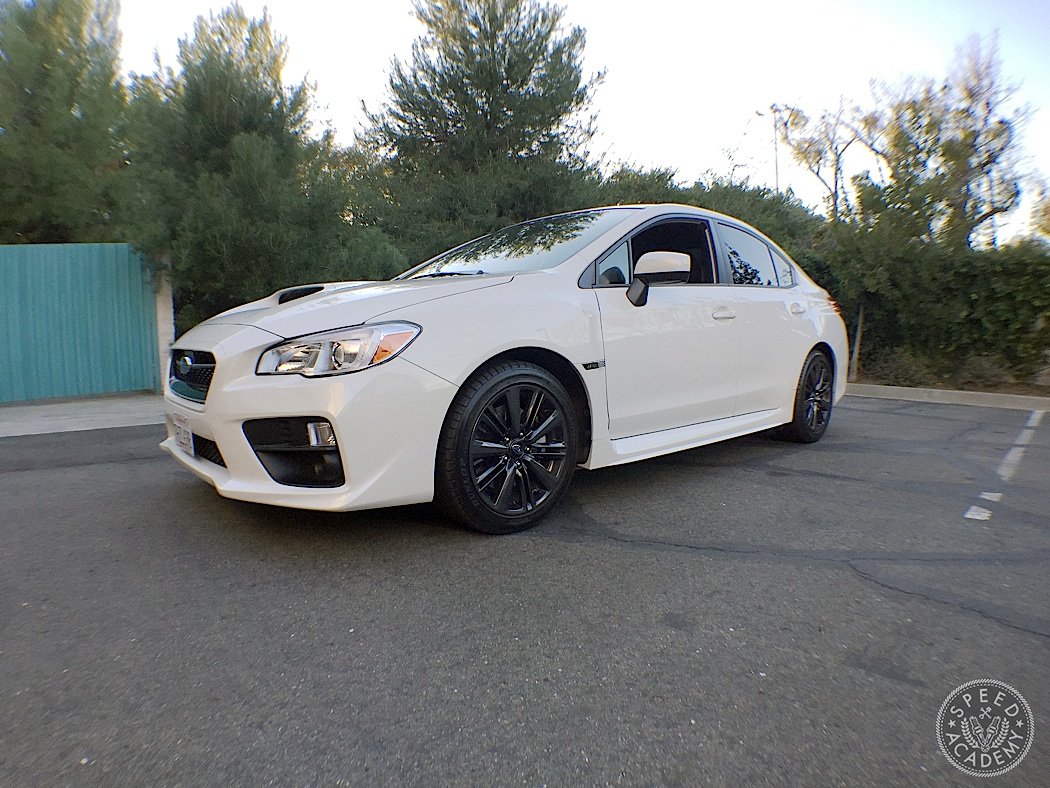
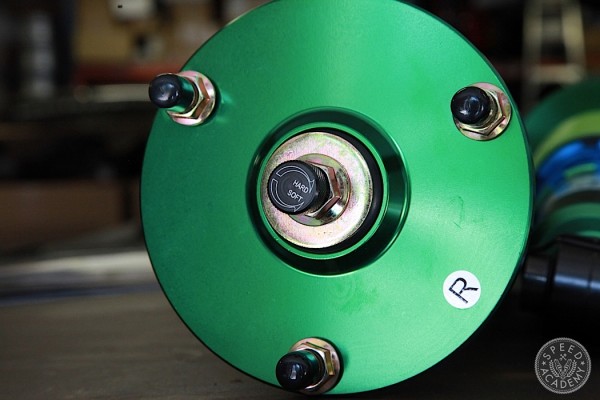
Nice, I really like the new WRX, but really dont’ like the new STI. Normally it’s the other way around. I might actually consider a WRX. Good gains though.
RodneySpearsII Having driven both, I think the WRX is the best bang for the buck and better daily driver of the two. Plus it has the new FA20 turbocharged engine so thats a bonus!
Do you think it’s safe to run this intake without tune
My Subaru tech said it will just run hotter. So there’s good and bad to that. Hotter cause its leaner, there’s good and bad to that. Leaner is meaner but its also hotter.
Do you think I could run this intake on cobbs generic stage 2 map? Cobb has not produced a ots stage 2 map specific for this intake. I will eventually custom tune.
I read once the ots tune did not like AEM. I read once…
Dave thanks for this real world info, forums today are a drag with he say she say. You were always the best columnist at SCC.
Im in the market for an intake, was looking AEM or Stillen. AEM being cheaper and local.
I will definitely be picking one up. Sorry Turn 14 maybe Ill have to open an account with you guys if you do Canadian wholesales.